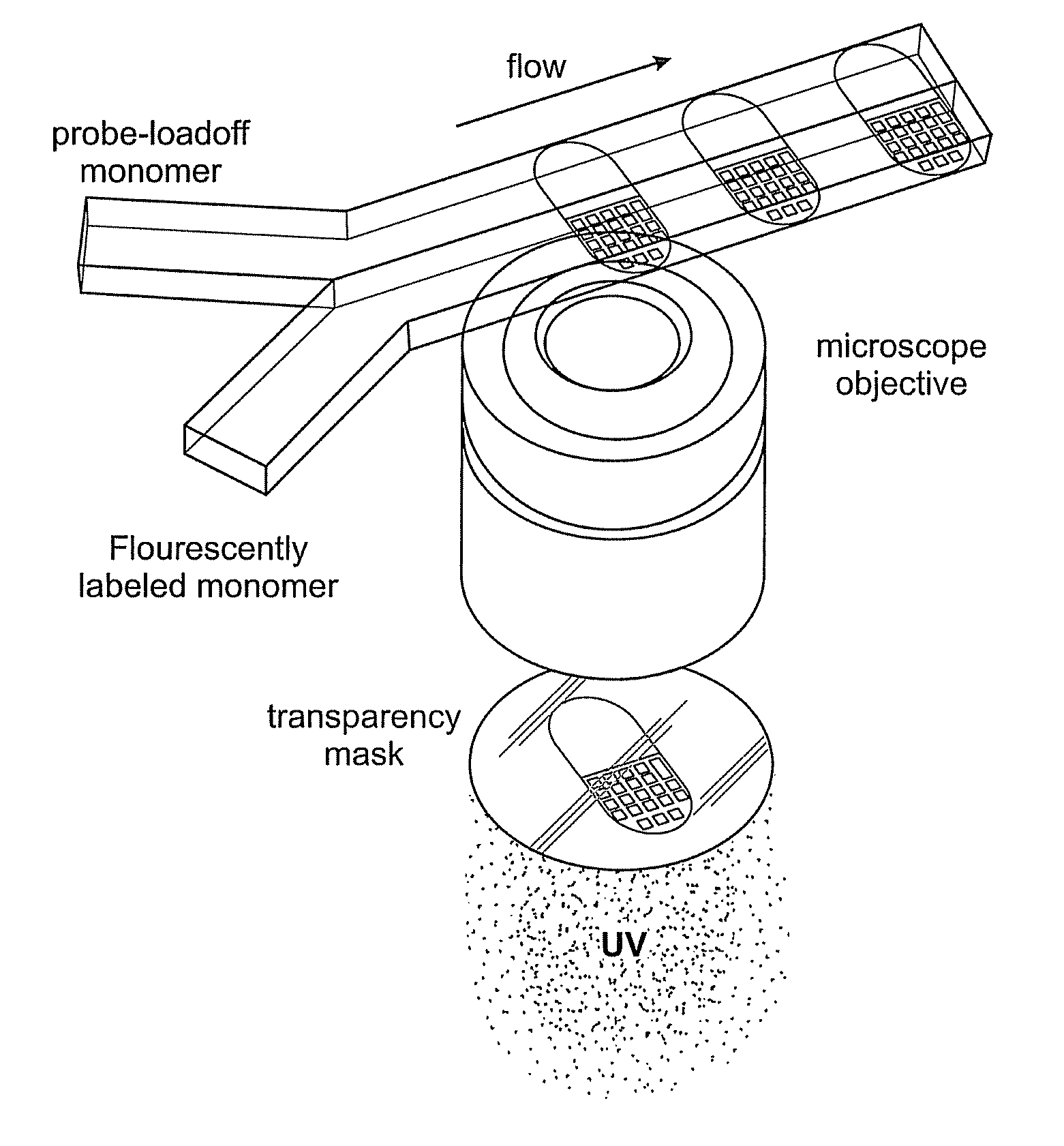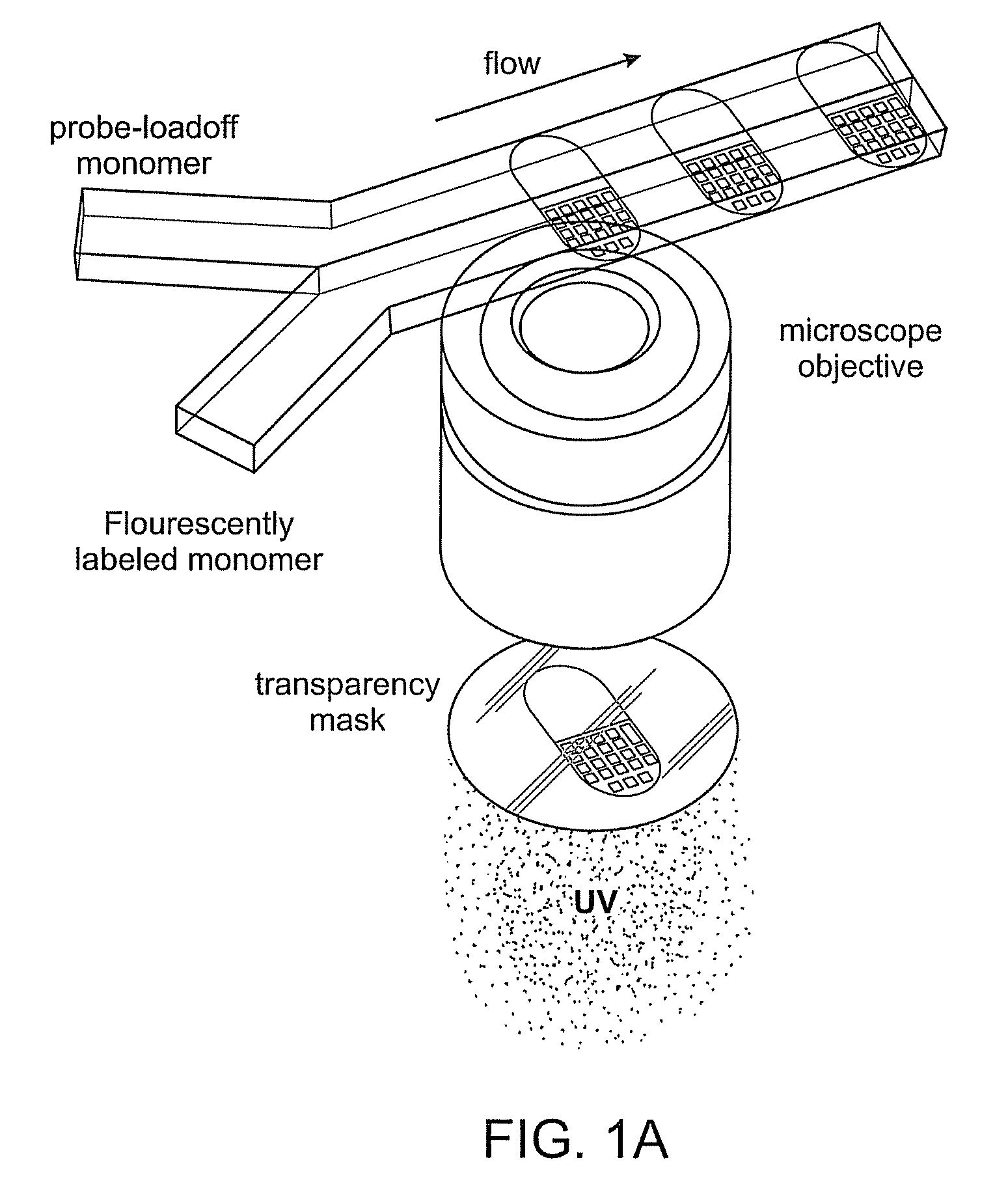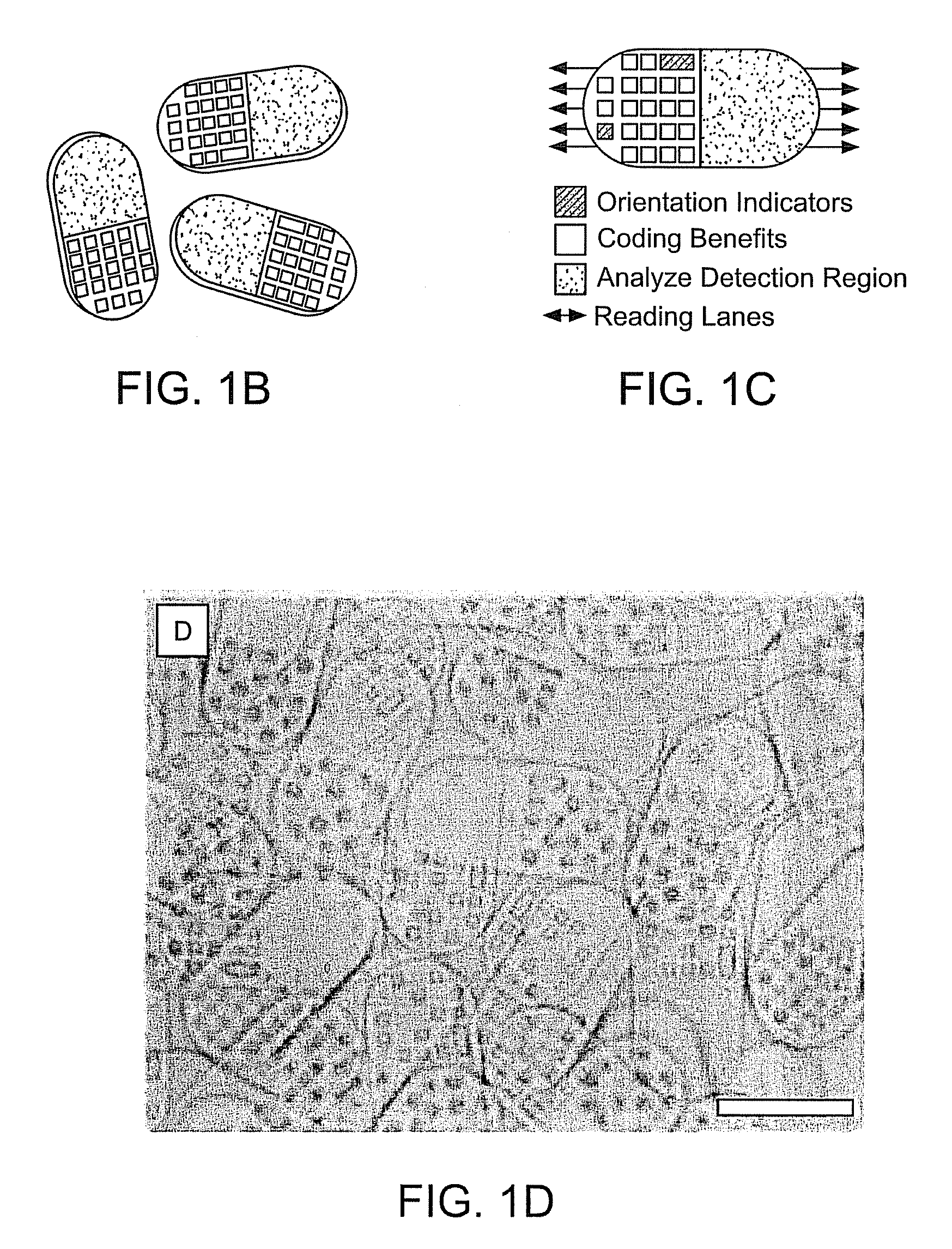Multifunctional encoded particles for high-throughput analysis
a multi-functional, high-throughput technology, applied in the field of high-throughput biomolecule analysis, can solve the problems of limited barcodes, lack of portability of bulky flow cytometers, and added cost of each fluorescent exciter and detector
- Summary
- Abstract
- Description
- Claims
- Application Information
AI Technical Summary
Benefits of technology
Problems solved by technology
Method used
Image
Examples
examples
Materials and Methods
Materials
[0043]Particles synthesized in this work were made from monomer solutions based on poly(ethylene glycol) diacrylate (PEG-DA, Aldrich, Mn=700) with 2-hydroxy-2-methylpropiophenone photoinitiator (Aldrich). For hybridization experiments, we used monomer solutions of 2:1 PEG-DA:TE Buffer (10 mM Tris pH 8.0 (Rockland), 1 mM EDTA (OmniPur)) with 1-2.5% initiator and a DNA oligomer probe at a concentration of 50 μM. Oligomer probes (IDT) came modified with a reactive Acrydite group and 18-carbon spacer (Probe #1: 5′-Acrydite-C18-ATA GCA GAT CAG CAG CCA GA-3′, Probe #2: 5′-Acrydite-C18-CAC TAT GCG CAG GTT CTC AT-3′). Encoded-region fluorescence was obtained by incorporating 0.005 wt % of methacryloxyethyl thiocarbamoyl rhodamine B (Polysciences) in the respective monomer solution with 1% blue food coloring to easily visualize the co-flowing streams using bright-field microscopy.
Microfluidic Devices
[0044]Microchannels were generated using standard procedures in...
PUM
| Property | Measurement | Unit |
|---|---|---|
| sizes | aaaaa | aaaaa |
| thickness | aaaaa | aaaaa |
| thickness | aaaaa | aaaaa |
Abstract
Description
Claims
Application Information
 Login to View More
Login to View More - R&D
- Intellectual Property
- Life Sciences
- Materials
- Tech Scout
- Unparalleled Data Quality
- Higher Quality Content
- 60% Fewer Hallucinations
Browse by: Latest US Patents, China's latest patents, Technical Efficacy Thesaurus, Application Domain, Technology Topic, Popular Technical Reports.
© 2025 PatSnap. All rights reserved.Legal|Privacy policy|Modern Slavery Act Transparency Statement|Sitemap|About US| Contact US: help@patsnap.com



